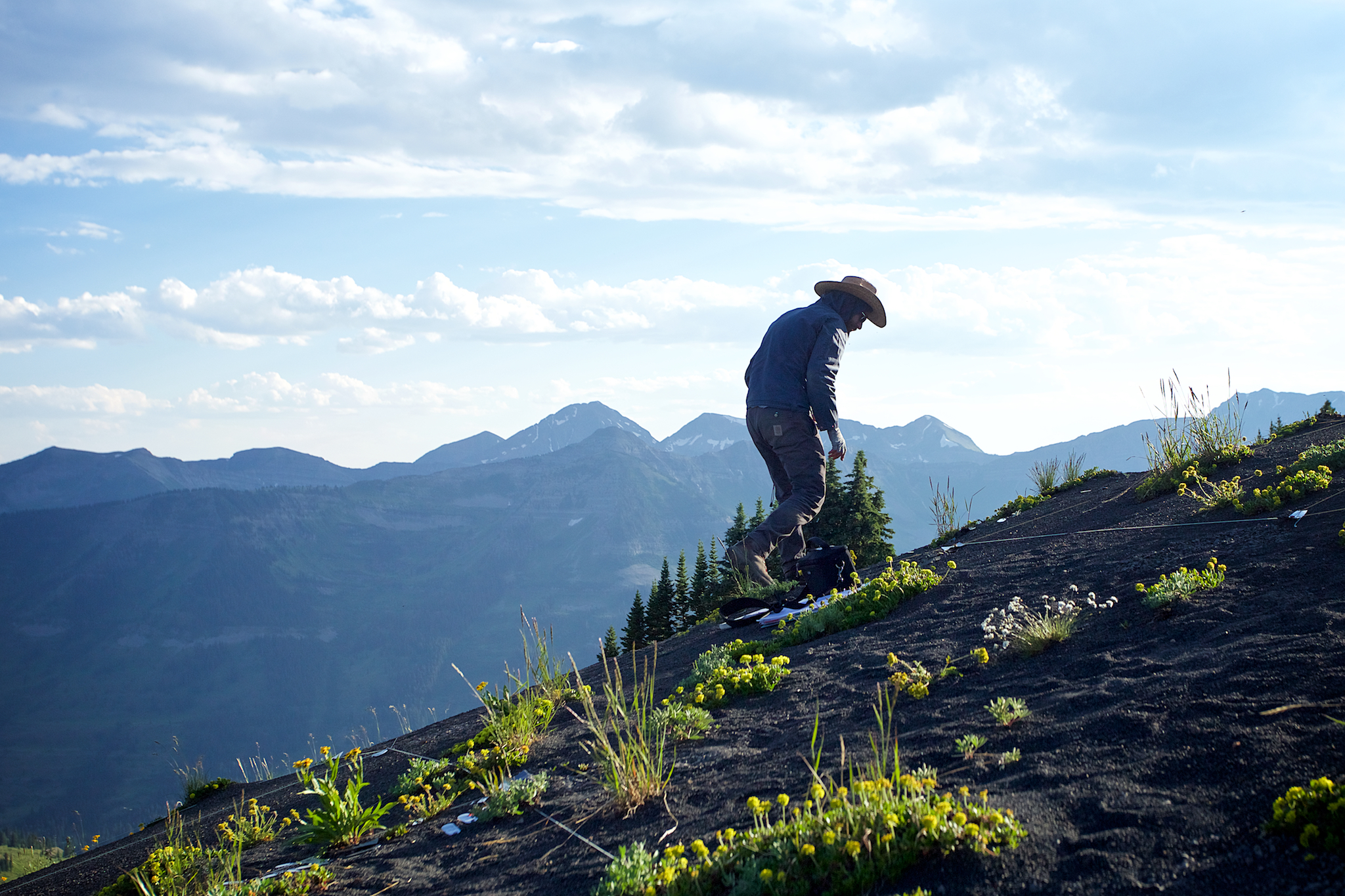Things fall apart on a mountainside, and low-cost choices begin to have their consequences. Three years ago I wanted to set up an alpine plant demography study, but had no external funding available – I had finished my PhD and was working on a part-time basis for Sky School, focusing on science education. I decided to give myself a small grant from my savings and get the project started anyway. It was a bit of a gamble, but I contributed a few hundred dollars’ worth of nails and string and field station fees, and got myself started.
To be able to census plants, each plant needs a unique tag associated with it. These are typically made of aluminum to withstand adverse conditions, and are not inexpensive. The first year of the project I was gifted a few thousand tags – more than enough to get started with. The trouble was that they were not pre-numbered, so I had to inscribe the tag numbers by hand, and the softness of the aluminum meant that the tags were not nearly as durable as I would have liked.
Three years later, many unforeseen events have come to pass. Marmots nibble on the cardboard sandwiched between the aluminum layers. Elk dislodge tags from the soil. And summer thunderstorms bring hail that dents the tags and leaves numbers almost unreadable.
Since starting this project the funding situation has improved. Early this summer I bought several thousand replacement tags made of thicker material with numbers already pre-engraved deep into the metal.
And then we hiked them all up to the mountain, systematically pulled out every old tag, and replaced them with the correct new ones.
The result of this process was many bags of aluminum and steel debris, encrusted with gravel, all brought back down for recycling.
Here is how one of the plots looks with the new tags installed. The tags are far easier to read from a distance, and will last for many summers and winters to come. They are a bit bigger, which potentially leads to some accidental site modification (e.g. covering the soil), but I think the tradeoff is worth it.
I imagine all these tags as being an overlay on the landscape, anchored in with only a few short centimeters of steel. These years of work and financial investment have let us draw that overlay for several years now. Having it lets us begin to tell a story about the lives of these plants.
I wish that I didn’t have to start this project using personal funds – doing so reflects the structural biases in our field – but making that choice has proven to be a good investment. I hope that our field will be able to expand access to seed funding for new scientists to undertake small and risky projects. The total cost would be low, and the potential benefits high. For this work, that kind of model would have worked well. Now my grant pays for the maintenance costs, and the project is surely is beginning to bring returns. Opportunity is a magical thing.









Comments
2 responses to “Essential plot maintenance”
Hi Benjamin ! This post was pointed to me by a colleague/friend that knows my love for plant demography.
I want to say, thanks for sharing your experience! I understand so much all the work and frustration you must have gone through. I have conducted myself work on alpine plant demography for some 3/4 years, and results are slow to come due to the inherent length of demographic studies and the additional slowness of alpine life.
Maybe you can think of these first years as a trial that allow you to know your system: your species, your sites, which variables you want to measure… I think very often the first or even the first two years of a demographic study might not bring usable data for a formal demographic analysis, but are anyway part of the process of getting knowledge on the system. They are part of the science! I am sure that you have learned a lot during these first years.
I have been using different kind of metal tags. The first one they were made of zinc, I think, and were very hard to read. Then I switched to aluminium tags, which were brighter and I liked it much more. I used to engrave myself the numbers in the metal, which took me considerable time, I did not know the existence of pre-engraved tags! Also, I used to map the positions of all plants in the plots, and take photos of each of them, which also took me much time…
I wonder what species you are working on ? And where ?
Thanks Marco – it’s great to meet another person with an interest in the alpine and in demography. I expected that the dynamics in this system would be very slow, but actually we are seeing very high levels of turnover in seedlings and high variation in above-ground biomass per individual across different years. It’s hard to tell a mortality event from a dormancy event, though, so the demography is going to be tricky. I hope your site is bringing you joy as well. This one is located near the Rocky Mountain Biological Laboratory in Gothic, Colorado. Check out the blog archives from the summer to learn more!